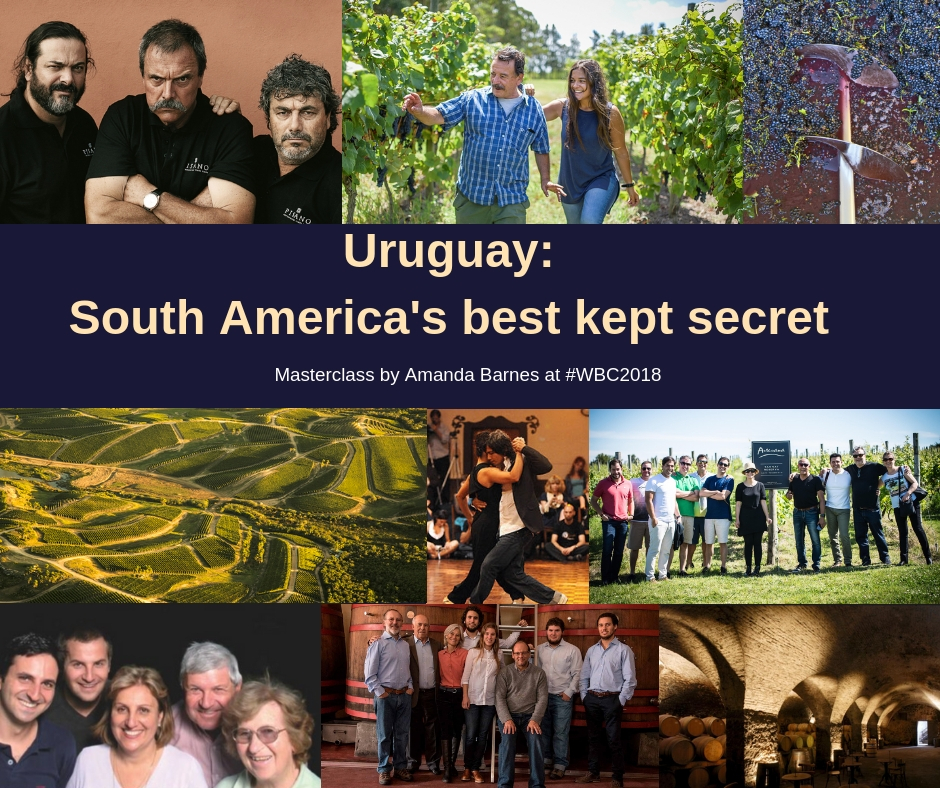Uruguay is one of the best-kept wine secrets of South America. This was the proposition I explained during a masterclass on the wines of Uruguay at the Wine Bloggers Conference 2018. Some bloggers in attendance asked for me to share parts of the presentation online, so here are some of the highlights from October’s Masterclass on the Wines of Uruguay and Uruguay’s wine regions.
Why Uruguay is a unique wine country
Uruguay may be one of the smallest countries in South America but it has quite a few big claims to its name. With the largest wine consumption outside of Europe (an impressive 28 litres per capita), wine is always on the menu in Uruguay. And so is beef! Uruguay is the world’s biggest consumer of beef per capita gobbling 124 lbs per capita!
The country isn’t shy of having a good time and Montevideo is believed to be the birthplace of tango and also hosts the world’s longest carnival (40 days). Uruguay was also the first country in the world to entirely legalist cannabis (in 2013) and has an impressive education record with every single child in Uruguay given their own laptop for school since 2009. In terms of sporting prowess, Uruguay was the first country to win the World Cup (in 1930).
While Uruguay can lay claim to many ‘firsts’ in the world, in terms of wine production in South America Uruguay comes fourth in production size (after Argentina, Chile and Brazil).
The wines of Uruguay and its wine regions
How much wine does Uruguay produce?
Uruguay produces 957,000 hectolitres of wine a year, from its 6,562 hectares of vineyards. The majority of Uruguay’s wine production is red (over 80%) with a growing category of white wine production.
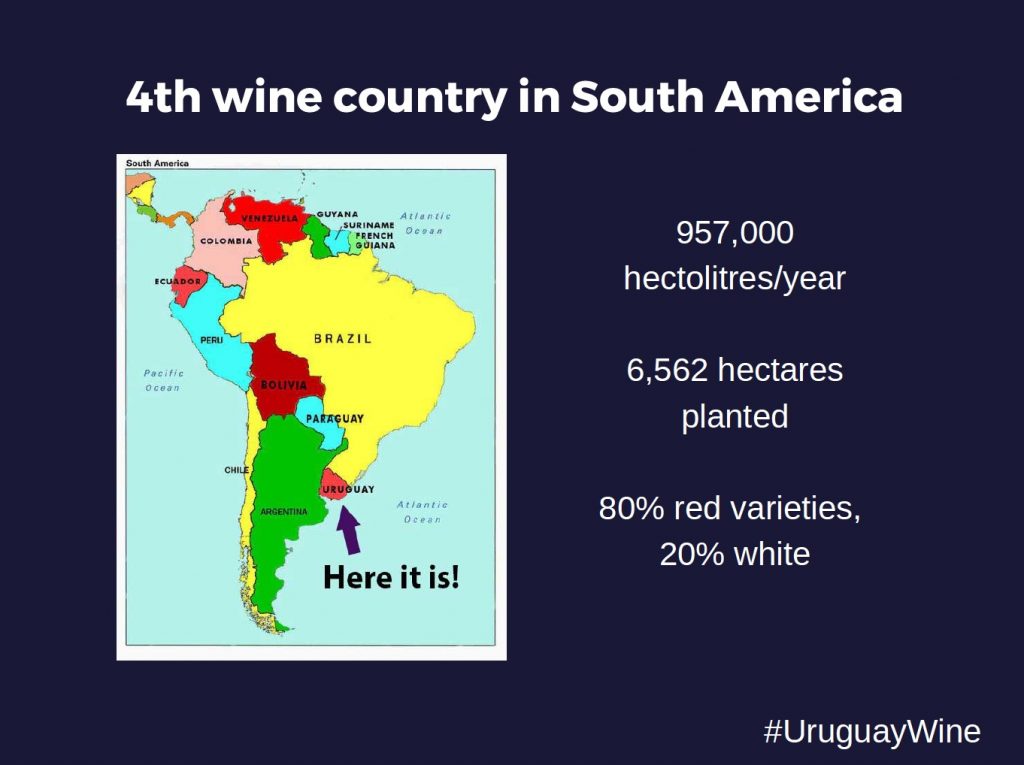
Where are the wine regions of Uruguay, and what is the climate of Uruguay’s wine regions?
Uruguay’s wine regions are spread all over the country, however the majority of wine production is concentrated in the coastal regions – especially in Canelones outside of the capital city of Montevideo. Over 60% of Uruguay’s wine production comes from Canelones. However there is considerable growth further along the coast in the region of Maldonado at the moment too, and pockets of discovery in the western, central and northern territories of Uruguay too.
The climate of Uruguay’s main wine regions along the coastline is a mild maritime Atlantic climate, similar to that of Bordeaux. Annual rainfall is between 850mm and 1250mm a year, and the climate is an average of 16C year round.
Read more on the other wine of Uruguay and different wine regions in our online guide.
How many wine producers are there in Uruguay?
Uruguay has over 3,500 growers, most of which are small family-run vineyards of less than five hectares in size. There are over 260 wineries in Uruguay and the majority of those are small family-owned businesses.
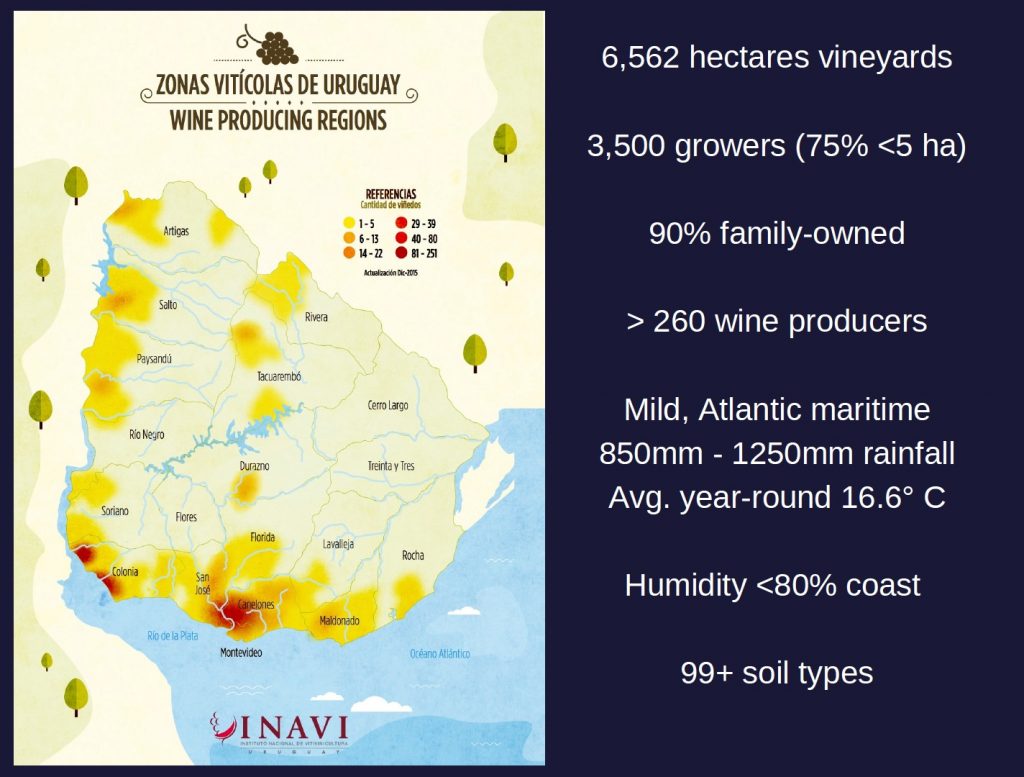
What are the grape varieties used in the wines of Uruguay?
Tannat is the most famous grape variety of Uruguay and it accounts for over a quarter of production, however, there are many other varieties that make some of Uruguay’s most exciting wines too (Albariño, Marselan, Cabernet Sauvignon, Cabernet Franc, Riesling). This diagram shows the main grape varieties planted in Uruguay:

Read more on the other grape varieties of Uruguay (beyond Tannat) in this guide.
The history of wine production and the wines of Uruguay
Uruguayan wine production started in the 1600s with the first European settlers who brought their winemaking and winegrowing traditions to the continent following the Spanish colonisation. Many of Uruguay’s wine families today can trace roots back to wine regions in Spain, Italy and France among other European wine countries.
One notable date in Uruguayan wine history was the arrival of Tannat in Uruguay in the early 1870s. Pascual Harraigue, a Basque Frenchman, was the first to plant the Tannat grape in Uruguay in 1870 in the northern region of Salto. The grape was actually called Harraigue for over a century (until the more internationally-recognised name Tannat was used principally for the export market). During the late 1900s, the emphasis on wine production in Uruguay transitioned from quantity to quality production.
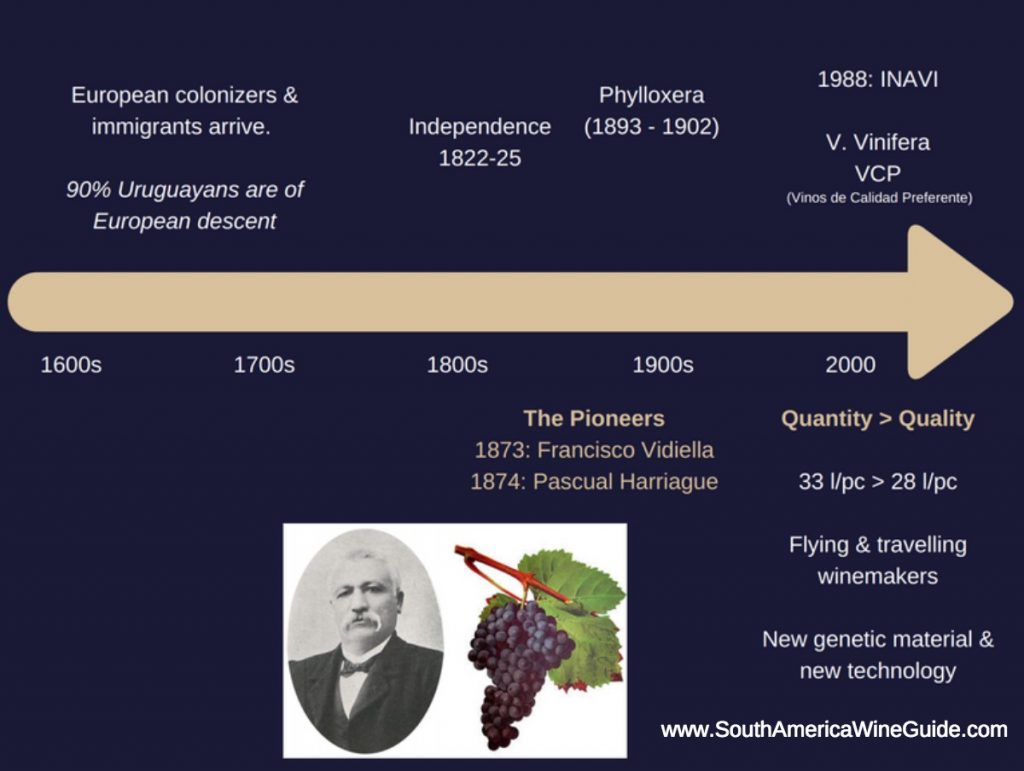
Tannat – Uruguay’s emblematic grape variety
Tannat is an ideal grape variety for Uruguay because it has thick skins which are hardy to the high rainfall and the consistent and warm temperatures during the growing season allow the tannins to ripen, while maintaining fresh acidity and a deep colour.
What does Tannat from Uruguay taste like?
Tannat is typically high in tannin, colour and acidity and it can produce wines with great ageing ability. Tannat wines from Uruguay are also enjoyable in their youth because wine producers in Uruguay have over a century’s experience working with the variety and managing the tannins in the vineyard and winery.
The level of antioxidants found in Tannat make it one of the healthiest wine varieties in the world, and it has appealing black fruit, spice, cocoa, tobacco, savoury and liquorice notes making it not only healthy but a delicious wine to drink. It is typically best paired with red meat and steak, although in Uruguay you will find locals drinking Tannat with just about every dish!
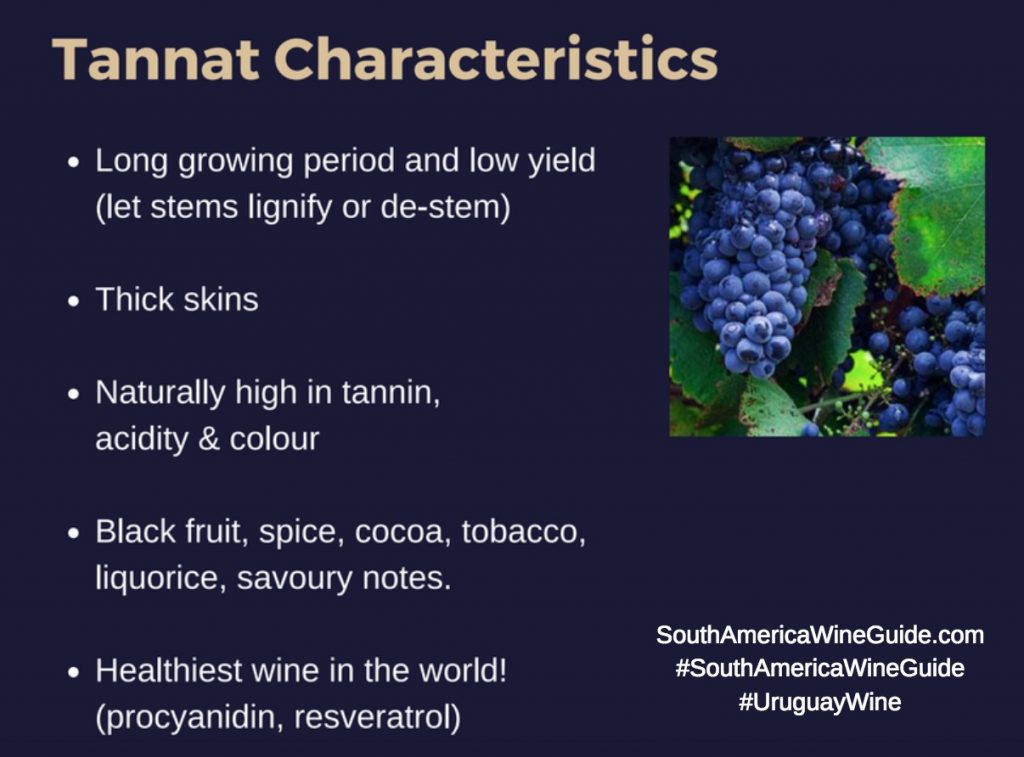
Wines of Uruguay Masterclass & Uruguay Wine Tasting by Amanda Barnes
Bouza Albariño
- Bodega Bouza (winemaker Eduardo Boido)
- Las Violetas, Canelones & Melilla, Montevideo
- 90% stainless steel, 10% barrel fermented.
- 3 months on lees. 100% Albariño.
- ElixerWineGroup.com $24.99
- www.bodegabouza.com
This delicious white wine comes from the first family to plant Albariño in Uruguay – the Bouza family. Elisa Bouza has Galician heritage and planted Albariño vines following a visit to see her relatives in Rias Baixas. The Bouza Albariño became on of Uruguay’s most popular premium wines and it displays the typical citrus, stone fruit and blossom notes you can associate with Albariño and has a fresh, mouthwatering acidity with a long finish.
_______________________________________________________________________________________
De Lucca Marsanne
- De Lucca (winemaker Reinaldo de Lucca)
- El Colorado, Canelones
- Concrete tanks, vines are over 30 years old
- [email protected] $15
- www.deluccawines.com
It is rare to find a single variety Marsanne and Reinaldo de Lucca planted these Marsanne vines over 30 years ago. The wine is savoury in character with nutty aromas on the nose, and a full and complex finish. It is a good food wine for white meats.
_______________________________________________________________________________________
Pisano Rio de los Pajaros Tannat
- Familia Pisano Viñedos & Bodegas (winemaker Gustavo Pisano)
- Progreso, Canelones (clay-calcareous)
- 6 months in French oak
- Total Wine $16
- www.pisanowines.com
This Tannat is designed to show you what the Tannat grape tastes like on the vine. It shows lots of the bright, primary fruit aromas and is juicy and crunchy in the palate – proving just how approachable Tannat can be in its youth.
_______________________________________________________________________________________
Marichal Reserve Tannat
- Bodega Marichal (winemaker Juan Andres Marichal)
- Etchevarría, Canelones. (25km from Rio de la Plata. Calcareous clay)
- 17 day fermentation. 70% aged in oak 12 months.
- Global Vineyard Importers $18
- www.marichalwines.com
This Tannat wine shows you a great example of more typical Tannat – plenty of youthful fruit aromas but also some of the more complex secondary aromas from some oak ageing. Coming from the traditional clay and calcareous soils of Canelones and a fourth-generation wine growing family.
_______________________________________________________________________________________
Artesana Zinfandel-Merlot-Tannat
- Artesana Winery (winemakers Analia Lazaneo & Valentina Gatti)
- Las Brujas, Canelones.
- 20 day cool maceration in stainless steel. 12 months in French & American oak.
- Austral Estates Wines $18
- www.artesanawinery.com
The first and only Zinfandel planted in Uruguay. Artesana is a boutique American-owned winery, partnered with two female winemakers from Uruguay. In this blend, the Merlot and Zinfandel add fleshy fruit to the mix while Tannat gives refreshing acidity and structure.
_______________________________________________________________________________________
Traversa Noble Alianza Marselan-Merlot-Tannat
- Familia Traversa
- Cuchilla Pereira, Montevideo
- Stainless steel fermentation. 6 months in barrel.
- [email protected] $12
- www.grupotraversa.com.uy
Marselan is an important variety for Uruguay and this blend shows how well it works with Tannat and Merlot. The wine is savoury and earthy but is underpinned by dark fruit and has a full and rich finish – great for pairing with winter meals.
_______________________________________________________________________________________
Familia Deicas Valle de los Manantiales
- Familia Deicas (winemaker Paul Hobbs)
- Valle de los Manantiales (Valley of Springs), Garzón, Maldonado (granite, facing coast, 25% slope)
- 50% barrel aged, 9 months
- Paul Hobbs (importer) $40
- www.familiadeicas.com
The Deicas family have been hunting down new terroirs for Tannat for the last 15 years and this wine is the result of that search. The first winery to plant in the sub-region of Garzón, the free-draining granitic soils keep the fruit expression of this Tannat wine bright with a fresh acidity and great length. A modern approach to Uruguayan Tannat and a great food wine.
_______________________________________________________________________________________
Garzón Single Vineyard Tannat
- Bodega Garzón (winemakers Alberto Antonini & Germán Bruzzone)
- Garzón, Maldonado. Granitic soils, 18km from the coast.
- Fermentation in cement tanks. 12 to 18 months on the lees, French barrels and casks.
- Pacific Highway Wines & Spirits $30
- www.bodegagarzon.com
One of the most important recent investments for wine in Uruguay, Bodega Garzón has planted a significant wine estate in the coastal region of Garzón. The granite soils and cooler maritime climate keep this Tannat bright and energetic with a peppery tannins and lively acidity. Part of their exciting Single Vineyard range.
______________________________________________________________________________________
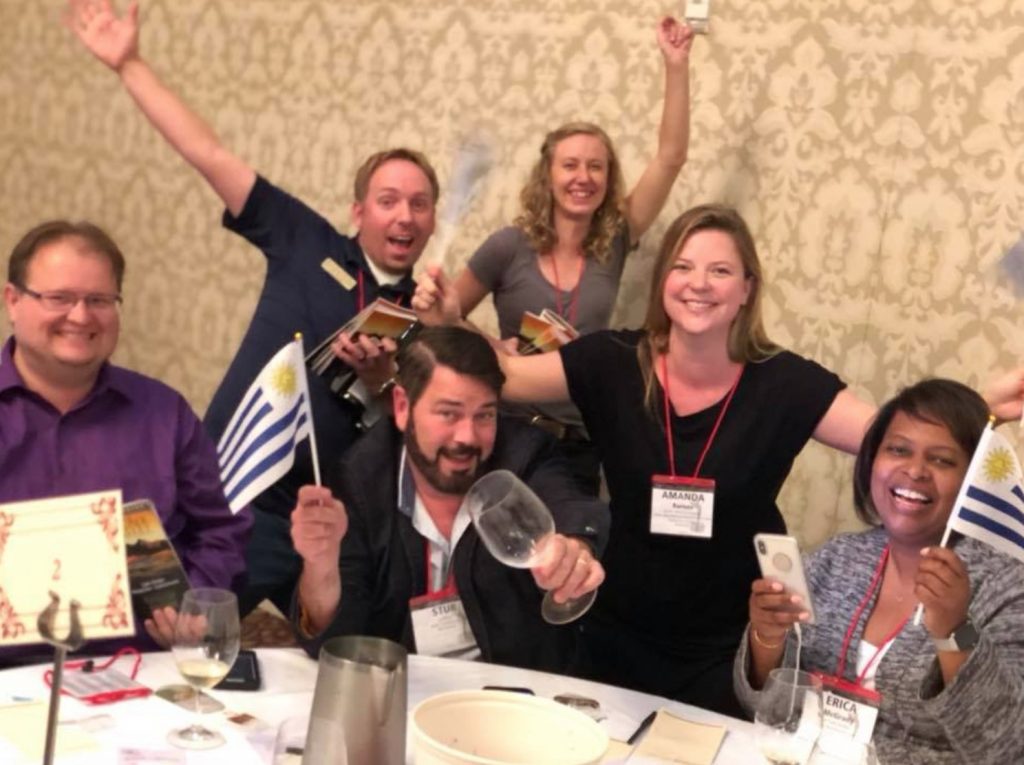
Read more on the wines of Uruguay & Uruguayan wine producers:
- Uruguay: a wine country that’s more than just Tannat by Amanda Barnes, South America Wine Guide
- Uruguay wine production in numbers, South America Wine Guide
- A guide to Uruguay’s wine regions by Amanda Barnes, South America Wine Guide
- Uruguay, the little country in between by Amanda Barnes, South America Wine Guide
- Garzon, an en primeur first for Uruguay by Amanda Barnes, Around the World in 80 Harvests
- The story of Tannat: Interview with winemaker Francisco Carrau by Amanda Barnes, 80 Harvests
- Uruguay’s other white varieties: Interview with Pablo Fallabrino by Amanda Barnes, 80 Harvests
- Canelones: An infographic & wine region guide by Amanda Barnes, 80 Harvests
- Is Tannat old hat? by Amanda Barnes, 80 Harvests
Recommended blogs of writers who attended the Uruguay masterclass:
- Uruguay, wine not? by Holly Shaw, Wine Not Whine
- Tannat: The Dark Horse of the wine world finds light in Uruguay by Melanie Webber, Bottle Poet
- Uncovering Uruguay by Brianne Cohen, Sommspirations
